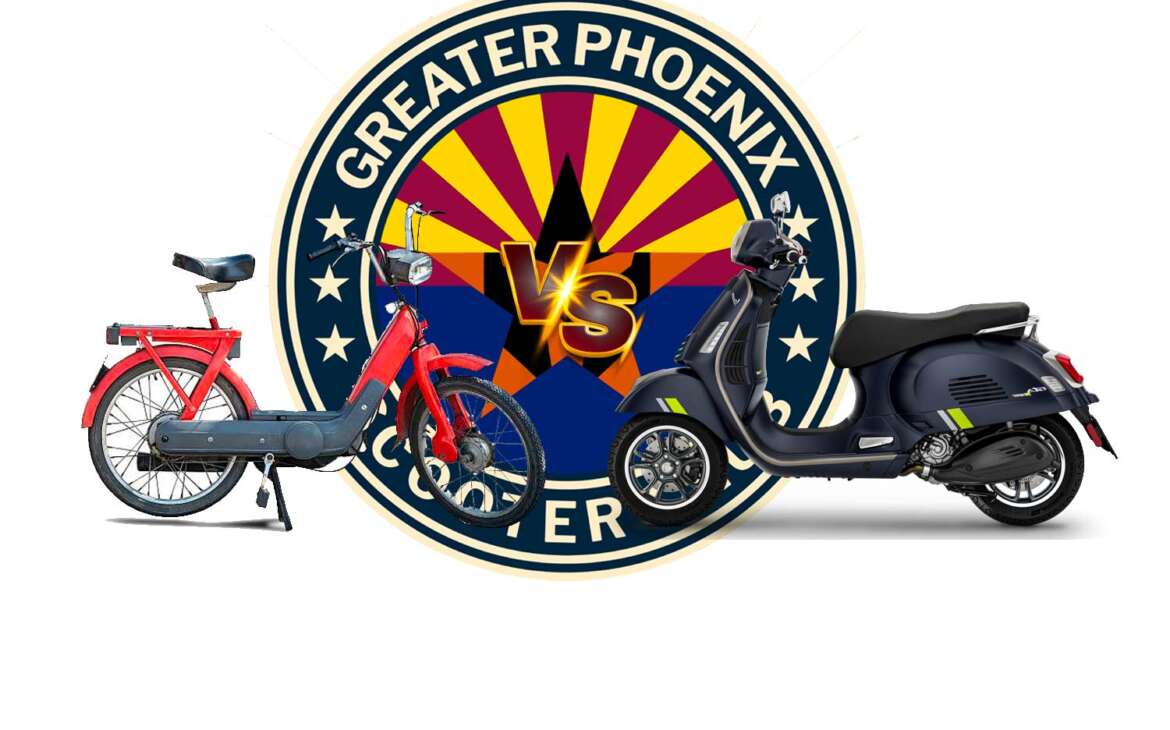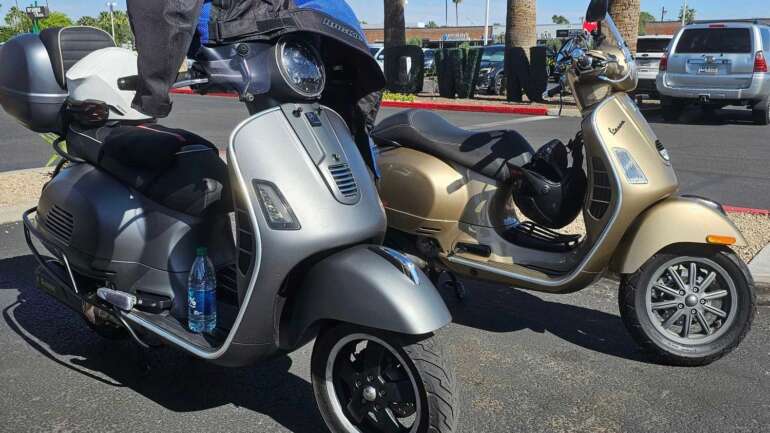The Definitive Guide to the Differences Between Mopeds and Scooters
When considering two-wheeled vehicles for urban commuting, mopeds and scooters are often among the top choices. Although these terms are sometimes used interchangeably, mopeds and scooters have distinct differences in terms of regulation, design, manufacturers, and prices. This guide aims to thoroughly examine these differences to help you make an informed decision.
Regulation
Mopeds
Definition and Classification:
- Regulatory Definition: A moped is typically defined as a two-wheeled vehicle with a motor capacity of less than 50cc (cubic centimeters) and a maximum speed of about 28-30 mph.
- Licensing and Registration: In many states in the U.S., mopeds require a valid driver’s license, but not necessarily a motorcycle license. Registration requirements can vary by state.
Legal Restrictions:
- Speed Limits: Due to their low speed capabilities, mopeds are often restricted to roads with lower speed limits and may be prohibited from highways and freeways.
- Age Requirements: Most states set a minimum age of 15 or 16 to operate a moped.
Scooters
Definition and Classification:
- Regulatory Definition: Scooters, or motor scooters, generally have a motor capacity ranging from 50cc to 250cc or more. They can reach higher speeds compared to mopeds, often exceeding 30 mph.
- Licensing and Registration: Scooters typically require both a driver’s license and a motorcycle endorsement. They must be registered and may require insurance, depending on the state.
Legal Restrictions:
- Highway Use: Higher-powered scooters are often allowed on highways, unlike mopeds.
- Age Requirements: The age requirement for scooters is usually the same as for motorcycles, typically starting at 16 or 17 years old.
Design
Mopeds
Engine and Performance:
- Engine Size: Mopeds have smaller engines, usually under 50cc.
- Speed: They are designed for low-speed travel, usually maxing out at around 28-30 mph.
Frame and Features:
- Bicycle-like Pedals: Traditional mopeds have pedals, similar to a bicycle, which can be used to start the motor or assist in propulsion.
- Lightweight Frame: Mopeds are generally lighter and simpler in construction, with minimalistic features.
Scooters
Engine and Performance:
- Engine Size: Scooters have larger engines, typically ranging from 50cc to 250cc or more.
- Speed: They can achieve higher speeds, suitable for urban and some highway use.
Frame and Features:
- Step-through Frame: Scooters feature a step-through frame design, making it easy to mount and dismount.
- Storage and Comfort: Scooters often come with more storage options (under-seat storage, glove compartments) and comfort features (larger seats, footrests).
Manufacturers and Prices
Mopeds
Popular Manufacturers:
- Tomos: Known for producing reliable and affordable mopeds.
- Puch: A classic brand with a long history in moped manufacturing.
- Honda: Offers a few models that fit the moped category, known for their reliability.
Price Range:
- New Mopeds: Typically range from $1,000 to $3,000.
- Used Mopeds: Can be found for as low as $500, depending on condition and age.
Scooters
Popular Manufacturers:
- Vespa: An iconic Italian brand known for its stylish and high-quality scooters.
- Honda: Offers a wide range of scooters, from the budget-friendly Honda Ruckus to the more powerful Honda Forza.
- Yamaha: Known for their durable and performance-oriented scooters.
Price Range:
- New Scooters: Typically range from $2,000 to $10,000, depending on engine size and features.
- Used Scooters: Prices can start at around $1,000, varying based on model and condition.
Additional Considerations
Fuel Efficiency
Mopeds:
- High Fuel Efficiency: Due to their smaller engines, mopeds are highly fuel-efficient, often achieving 100 miles per gallon (mpg) or more.
Scooters:
- Moderate to High Fuel Efficiency: Scooters also offer good fuel efficiency, though typically lower than mopeds, ranging from 60 to 80 mpg.
Maintenance and Durability
Mopeds:
- Simple Maintenance: Mopeds are mechanically simpler and thus easier and cheaper to maintain. However, they may not be as durable for long-term, high-mileage use.
Scooters:
- Complex Maintenance: Scooters have more complex engines and features, which can lead to higher maintenance costs. They are generally built for more robust use and can handle higher mileage better than mopeds.
Environmental Impact
Both mopeds and scooters are generally more environmentally friendly than cars due to their higher fuel efficiency and lower emissions. Electric versions of both types are becoming more available, offering even greener alternatives.
Conclusion
Choosing between a moped and a scooter depends largely on your specific needs and circumstances. If you need a low-cost, fuel-efficient vehicle for short, urban commutes and do not require highway capability, a moped might be the best choice. On the other hand, if you need a more versatile vehicle capable of higher speeds and longer distances, a scooter would be more suitable.
Understanding the differences in regulation, design, manufacturers, and costs can help you make an informed decision. Both mopeds and scooters offer unique benefits and can provide convenient, economical, and enjoyable transportation options.



